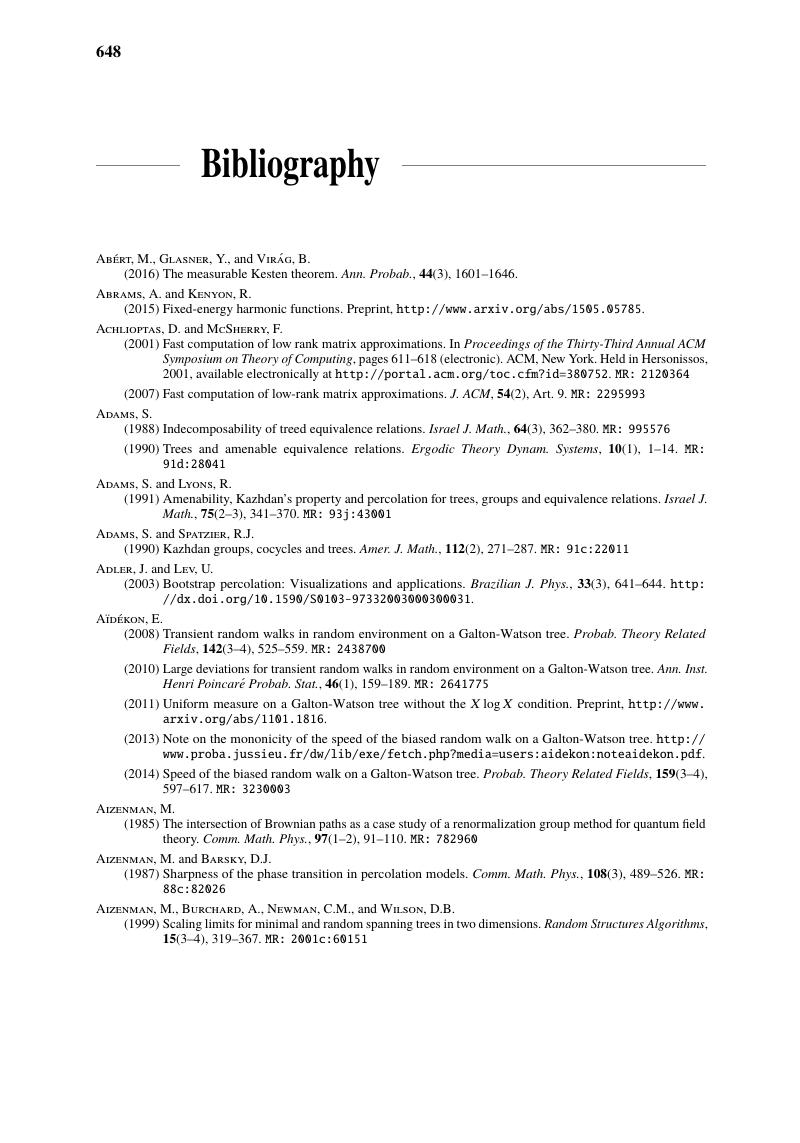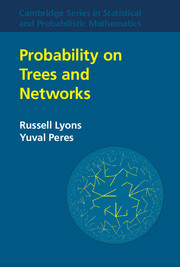Book contents
- Frontmatter
- Contents
- Preface
- Chapter 1 Some Highlights
- Chapter 2 RandomWalks and Electric Networks
- Chapter 3 Special Networks
- Chapter 4 Uniform Spanning Trees
- Chapter 5 Branching Processes, Second Moments, and Percolation
- Chapter 6 Isoperimetric Inequalities
- Chapter 7 Percolation on Transitive Graphs
- Chapter 8 The Mass-Transport Technique and Percolation
- Chapter 9 Infinite Electrical Networks and Dirichlet Functions
- Chapter 10 Uniform Spanning Forests
- Chapter 11 Minimal Spanning Forests
- Chapter 12 Limit Theorems for Galton-Watson Processes
- Chapter 13 Escape Rate of Random Walks and Embeddings
- Chapter 14 RandomWalks on Groups and Poisson Boundaries
- Chapter 15 Hausdorff Dimension
- Chapter 16 Capacity and Stochastic Processes
- Chapter 17 RandomWalks on Galton-Watson Trees
- Comments on Exercises
- Bibliography
- Glossary of Notation
- Index
- Plate section
- References
Bibliography
Published online by Cambridge University Press: 19 January 2017
- Frontmatter
- Contents
- Preface
- Chapter 1 Some Highlights
- Chapter 2 RandomWalks and Electric Networks
- Chapter 3 Special Networks
- Chapter 4 Uniform Spanning Trees
- Chapter 5 Branching Processes, Second Moments, and Percolation
- Chapter 6 Isoperimetric Inequalities
- Chapter 7 Percolation on Transitive Graphs
- Chapter 8 The Mass-Transport Technique and Percolation
- Chapter 9 Infinite Electrical Networks and Dirichlet Functions
- Chapter 10 Uniform Spanning Forests
- Chapter 11 Minimal Spanning Forests
- Chapter 12 Limit Theorems for Galton-Watson Processes
- Chapter 13 Escape Rate of Random Walks and Embeddings
- Chapter 14 RandomWalks on Groups and Poisson Boundaries
- Chapter 15 Hausdorff Dimension
- Chapter 16 Capacity and Stochastic Processes
- Chapter 17 RandomWalks on Galton-Watson Trees
- Comments on Exercises
- Bibliography
- Glossary of Notation
- Index
- Plate section
- References
Summary

- Type
- Chapter
- Information
- Probability on Trees and Networks , pp. 648 - 686Publisher: Cambridge University PressPrint publication year: 2017



